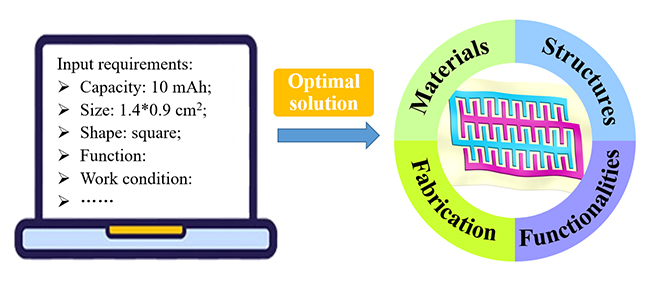With the development of the internet of things and information technology, it can be foreseen that we will enter a digital, intelligent and fully connected world.
In the future, we may monitor our health status through wearable devices, cure diseases with the aid of advanced implanted microelectronics, and obtain real-time information about the surrounding environment by means of multi-node sensors, all of which require a large number of microscale electronic terminals as support.
Recently, a research team led by Prof. WU Zhong-Shuai from the Dalian Institute of Chemical Physics (DICP) of the Chinese Academy of Sciences (CAS) clarified the importance of digital microscale electrochemical energy storage devices, a component of microscale electronic systems.
This work was published as a Focus Review in ACS Energy Letters on Dec. 15.

Ideal construction process of digital microscale electrochemical energy storage devices (Image by SHI Xiaoyu and HOU Xiaocheng)
The researchers indicated that a fully connected and intelligent world required different electronic devices to possess highly designable and customizable properties, in order to achieve seamless integration and assimilation into various situations. Meanwhile, these requirements highly depended on the applicability of microscale electrochemical energy storage devices with the innovative all-around digitalization.
They summarized the current status and latest progress of digital microscale electrochemical energy storage devices from key materials, device geometries, structure engineering, fabrication process, functional characteristics and system integration. And they further discussed the respective design principles and promising development directions.
"It is a prerequisite to establish evaluation standards, and the enrichment of analysis methods and the introduction of machine learning technology are powerful means to realize the digitization of microscale electrochemical energy storage devices," said Prof. WU.
The researchers also proposed the future development direction and challenges of the digital microscale electrochemical energy storage devices in this work.
The above work was supported by the National Natural Science Foundation of China and the China Postdoctoral Science Foundation. (Text by SHI Xiaoyu and HOU Xiaocheng)